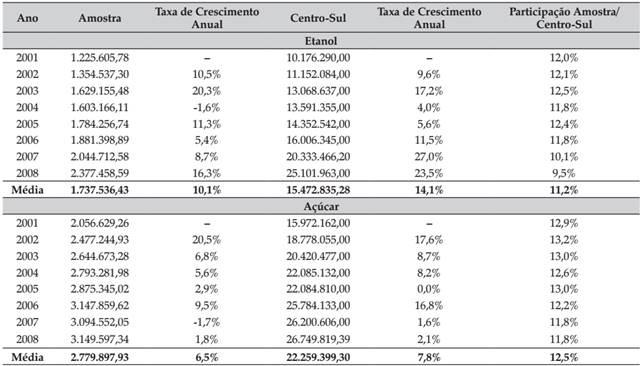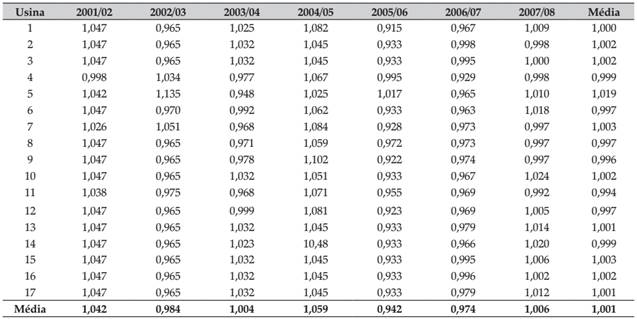Abstract:
The sugarcane industry is strategic regarding the increasing demand for new sources of energy alternatives to oil and byproducts, given the pressures on the raw material. Due the future scenario that is taking shape, the ethanol produced from the sugarcane has advantages to conquer new markets, but since it has an efficient production and that makes a good use of existing resources. Therefore, the study analyzes the Total Factor Productivity (TFP) and their components for 17 mills in the Center-Southern region in Brazil during the period from 2001 to 2008. The sample is considered significant because the volume of cane crushed represents 11.5% of the total in Brazil. The methodology is based on Coelli et al . (1998), from Data Envelopment Analysis (DEA), using the Malmquist index, which assesses the productivity levels over time, decomposing them into indices that capture variation of the technical efficiency and technological changes. The paper concludes that the sample is composed mostly of followers, ie, the plants do not create and adopt radical innovations. They just follow a set move toward technologies already tested in the market and proven by other plants.
Key-words:
Sugarcane sector; Data Envelopment Analysis; Malmquist Index.

 Thumbnail
Thumbnail
 Thumbnail
Thumbnail
 Thumbnail
Thumbnail
 Thumbnail
Thumbnail
 Thumbnail
Thumbnail
 Thumbnail
Thumbnail
 Thumbnail
Thumbnail
 Thumbnail
Thumbnail
 Thumbnail
Thumbnail
 Thumbnail
Thumbnail
 Fonte:
Fonte:  Fonte:
Fonte:  Fonte:
Fonte:  Fonte:
Fonte: 











